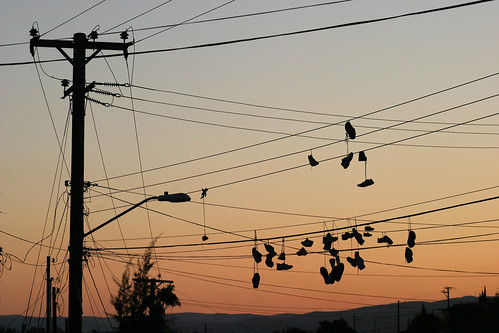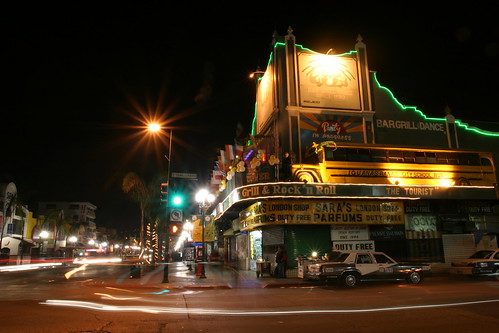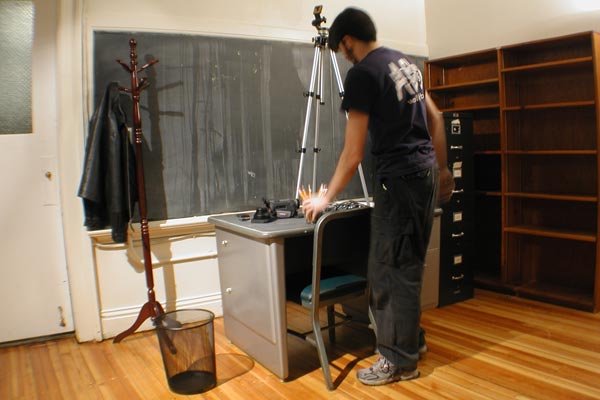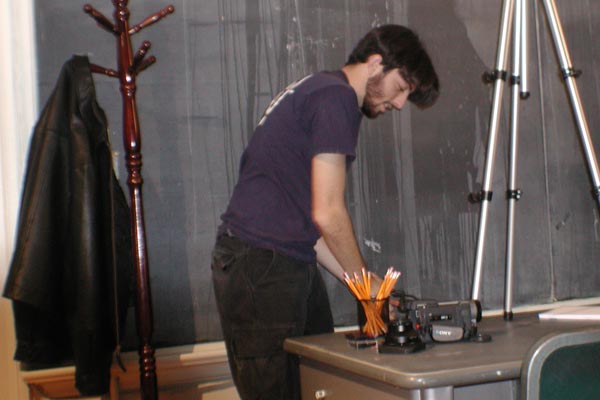As Rosario and I came back across the border in Otay this weekend, I took the truck through the Sentri lane and she walked across (she doesn’t have a Sentri pass yet). I waited a few minutes in line but passed through quickly. “Do you have anything to declare?” asked the agent. As soon as I said “no” he waved me through.
I parked by the Carls Jr. and walked down to join Rosario as she crossed on foot. I stopped by the Sentri office to pick up an application for her, and as I came out she had just crossed. She told me that there was an older woman in line in front of her who stepped into the line for bicycles to rest her leg (there is a dedicated lane for cyclists that goes much faster). An agent approached and asked loudly, “Qué haces aquÃ?” (what are you doing here) “Me duele mi pierna” (my leg hurts) she said showing him her leg. “Ese no es mi problema, vayase a la otra lÃnea” (that’s not my problem, get back in line) he ordered pointing to the back of the line. The agent immediately walked over to a tall man who wasn’t in line but was watching the cars cross outside. “What are you looking at?” he asked this time in English. “Nada” replied the man. “You can’t be here, get back in line.” At that moment, Rosario looked up and saw a large border patrol banner that read “We are the face of our nation.”
Earlier that same morning, I heard a story on Weekend Edition about the Bath Riots.

For decades, U.S. health authorities used noxious, often toxic chemicals to delouse Mexicans seeking to cross the border into the United States . . . Before being allowed to cross, Mexicans had to bathe, strip nude for an inspection, undergo the lice treatment, and have their clothes treated in a steam dryer.
The treatment included gasoline baths and toxic fumigations (including DDT). The Bath Riots began when 17-year-old Carmelita Torres rallied 30 others in 1917 to refuse. This “ethnic cleansing” continued for decades. In Ringside Seat to a Revolution, author David Dorado Romo reveals some of his findings from the National Archives in Washington DC:
I discovered an article written in a German scientific journal written in 1938, which specifically praised the El Paso method of fumigating Mexican immigrants with Zyklon B. At the start of WWII, the Nazis adopted Zyklon B as a fumigation agent at German border crossings and concentration camps. Later, when the Final Solution was put into effect, the Germans found more sinister uses for this extremely lethal pesticide. They used Zyklon B pellets in their own gas chambers not just to kill lice but to exterminate millions of human beings.
The lice treatments in Texas are an extreme example, but still a hauntingly nostalgic picture of what many Mexicans still encounter today. Abuse stories by “la migra” (officially U.S. Customs and Border Protection or CBP) no doubt sparked this promotional video to improve public opinion. And even as you cross today, take note of the laminate signs stating the CBP Core Values:
- Vigilance is how we ensure the safety of all Americans. We are continuously watchful and alert to deter, detect and prevent threats to our Nation. We demonstrate courage and valor in the protection of our Nation.
- Service to Country is embodied in the work we do. We are dedicated to defending and upholding the Constitution of the United States. The American people have entrusted us to protect the homeland and defend liberty.
- Integrity is our cornerstone. We are guided by the highest ethical and moral principles. Our actions bring honor to ourselves and our agency.


 Don’t be fooled by the name, it has nothing to do with Spanish anything. But it has everything to do with good music. It’s an instrumental rock set with wings. The rhythm is both spontaneous and insistent. The songs take you up and down and back again with a natural energy; as soon as you think a phrase or section is getting old, it moves on, giving each track a life of its own. Make no mistake, this is musical rock, not pop rock. Definitely worth a
Don’t be fooled by the name, it has nothing to do with Spanish anything. But it has everything to do with good music. It’s an instrumental rock set with wings. The rhythm is both spontaneous and insistent. The songs take you up and down and back again with a natural energy; as soon as you think a phrase or section is getting old, it moves on, giving each track a life of its own. Make no mistake, this is musical rock, not pop rock. Definitely worth a 

